Facebook has already changed the way we communicate, creating virtual extensions of our real lives. Social networks are a microcosm of users’ social worlds and a continuation of offline behaviors. But that’s just for the regular folk – what about artists? How do artists use Facebook to augment their existing work, discuss ideas related to the work and think about the idea of online community?
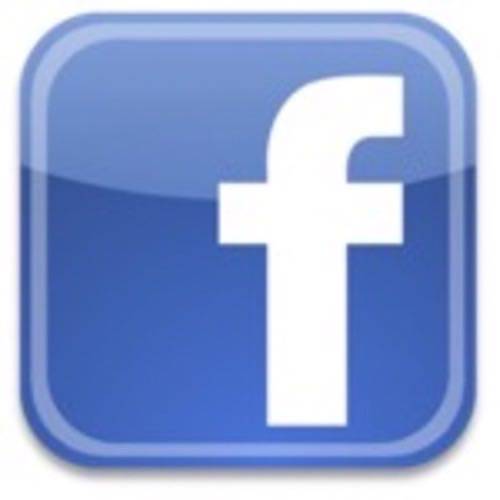
To find out, I asked three artists who are rather active on Facebook: BRAVO art-reality TV star Young-Sun Han, San Francisco-based artist and GAP Storyteller Jason Hanasik and international artist Martha Rosler.
Facebook Is A Gateway Drug To Reality TV: Artist Young-Sun Han
Korean-American/Kiwi artist Young Sun-Han recently appeared on Season 2 of the BRAVO artist-reality TV show “Work of Art: The Next Great Artist,” so he’s gotten pretty used to living in public. He has an active Facebook profile and fan page, but he says it has not influenced his work – at least, not yet.
On his website, Young writes that his practice is concerned with “the human experience, sexuality, intimacy between strangers and the merging of the lives of strangers.” Indeed, his oddly seductive work skirts the line between creepy and sexy, stretching ideas of public and private.

A few years ago, the artist placed a Craigslist ad for a stranger to hug him for a sustained 24-hour period of time. Young picked 13-time marathon runner Gerald O. Heller. The two men stayed connected until the very last second. Everything happened in front of an audience of strangers and friends.
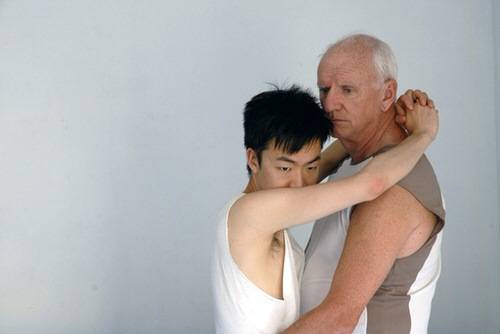
As such, Young is no stranger to the Internet. He does not think Facebook serves the same purpose for artists.
“In a way, FB reinforces the desire of artists to seek acclaim and mass approval through quantifiable means (comments, likes, etc),” writes Young. “I agree that FB is too quick in segmenting individuals into markets — so that we can be sold customized yoga or graduate school ads. I wish FB would encourage more play through their interface.”
For artists specifically, Young does see Facebook as “an opportunity to craft identities and test them virtually.” Unfortunately he doesn’t feel it has been done well – at least, not yet. “There’s potential there, but I haven’t seen too many clever uses aside from someone blogging as their cat or Kim Jong-un for example.”
Young does admit that, for him, Facebook was “perhaps a gateway drug to reality TV,” resulting in his appearance on season two of BRAVO’s “Work of Art: The Next Great Artist.”
For Young, Facebook is not as useful as other social networks he spends time on. “Twitter for that instant gratification, Craigslist to find the weird and wonderful…” he writes. He met his current boyfriend through Manhunt. He has used Couchsurfing to travel through India, Thailand and New Zealand, and he used to regularly host people he met off of Couchsurfing. “Facebook replaces my former Flickr and LiveJournal accounts,” he adds.
One thing that Young and perhaps many other artists and culture-watchers can concur is that Facebook is where to look for viral content. “It’s a machine for sensing that Interwebs zeitgeist,” Young says. “It’s useful since the zeitgeist changes so rapidly in contemporary and pop culture.”
Curiosity & Constructions of Identity: Artist Jason Hanasik
San Francisco-based artist Jason Hanasik‘s work is concerned with constructions of masculine identity. Last winter at Iceberg Projects in Chicago, I had the opportunity to see Jason’s show “He Opened Up Somewhere Along the Eastern Shore,” a gentle, sincere documentation of a Marine named Steven, the best friend of Cpl. Joshua Stricklen, a childhood pal of Hanasik’s who died during his first tour in Iraq. Hanasik photographed Steven after an out-of-the-blue road trip that the two of them took together shortly after Stricklen’s funeral.
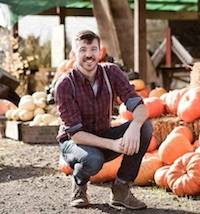
Hanasik works in photography, film and installation art – and by day he works for the GAP, and actually made the company’s “It Gets Better” video. He is at home on the Internet and in transient cultural spaces.
For Hanasik, Facebook is a useful tool. “I actually use it as a form of low grade research. I’m curious about people, mostly men, the identities they construct, the limitations culture places on how they can perform, and their emotional states,” he writes. “Facebook allows me to see how identities are or rather, can be curated and edited in a very public, constantly on, forum.”
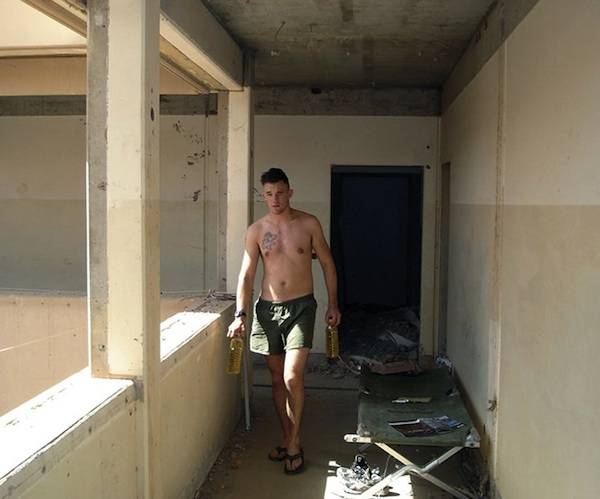
Facebook has, in a sense, helped Hanasik construct his identity faster, perhaps because of its intensely public feel.
“If I like or subscribe to a porn star then I am incredibly aware that a potential or previous collector will be aware that I am interested in X person,” Hanasik says. “That can be a detriment or a bonus, depending on the audience and one’s work but to be honest, I mainly think of the virtual space as an extension of the person I want to be, sometimes a fantasy and sometimes my actual lived experience. Sort of like throttling back and forth in Plato’s cave.”
The Personal Is Political And Always Will Be: Martha Rosler
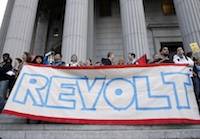
For the past 30-some-odd years, Martha Rosler’s work has taken on social issues. She works primarily in video, photo-text, installation and performance (and also writing criticism).
When I asked her if Facebook had influenced her work, she responded: “I don’t know what my work is! Doing Facebook, especially as a megaphone for OWS news, is like a project in itself.” But in fact, Rosler is a prolific Facebooker, sharing Salon.com articles like “More murder of Iranian scientists: still terrorism?”, news about OccupyWallStreet and that viral Forbes story “The Rumors About Bill Clinton Are True.” These articles always incite discussion amongst her nearly-5000 friends, and give fans and friends a better idea of Rosler’s ideology. Even though she does say she’s probably too exposed as a person with opinions on Facebook, there are two things she does not do. “I don’t advertise myself,” she says, “and I don’t post theory.”
This makes sense given that Rosler’s work itself functions as social critique. She uses herself as a vehicle for the message. In her pivotal 1974/75 video art piece, Semiotics of the Kitchen (1974/75), Rosler presents a smart critique of assumed feminine gender roles. In the video, the artist herself stands in a kitchen reciting the alphabet by abruptly naming objects. With each naming, the object in question appears. She names the object while simultaneously demonstrating how it is supposed to be used – “I…icepick,” she says, while stabbing the icepick into the air.
What Does Online Community Mean For Artists?
While Rosler does not see Facebook as an extension of her work, she is curious about the idea of online community.
“It’s a strenuously imaginary and intermittent grouping of comments and projections,” she writes. “Some people have closer relations with FB people, but I have too many friends of whom I know very few in real life.” She adds: “Very odd.”
Hanasik calls online community “a whole bunch of people who are passively interested in the goings on of other’s digital identities.” He differentiates between the two, noting: “There is a huge break between the digital and the lived experience of community for me. Both, in this day and age, are necessary and real but both have their limitations.”
Young takes a more playful attitude, noting how the rise of the Internet and cheap airfares made it possible for folks to meet online and then quickly meet in-person. He doesn’t really feel connected to any online communities though, because at the end of the day he’d rather be out in the real world.
“You can’t be everywhere at once though, so I appreciate having channels to get a myriad of global views, but it’s important to not neglect your immediate local community,” says Young. “Get outside, meet your neighbor, get your hands dirty.”
If you enjoyed this article, check out Why Writers Should Tweet.










